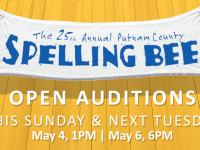First Maypole Dance in America, May 1, 1622
Let’s celebrate throughout 2022 our four hundredth anniversary of the very first maypole dance in America, on May 1, 1622. Damariscove’s incredible history provides a peek at our very deeply ingrained Midcoast-Maine culture of equality and liberty that preceded us and, more importantly, continues to permeate, shape, and distinguish us today.
English adventurer Thomas Weston sent, in the spring of 1622, his ship Sparrow, from England toward the Plymouth Colony, but the ship “wanting a pilot,” arrived at Damariscove Island. Sparrow crew member Phinehas Pratt reported: “The men belong to ye ship, there fishing, had newly set up a maypole and were very merry.”
English aristocrat John Pory visited Damariscove during autumn of 1622 and revealed Damariscove fishermen focused on fishing cod, like John Smith’s fishermen on Monhegan eight years earlier. These fishermen were “dry” fishermen, fishing from small shallop sailboats, dried fish on the island, and then loaded salted fish aboard the mother ship. This required at least thirteen permanent residents and transitory fishermen to live and work in true community. For protection from French and Natives, they fortified themselves on the island with a strong fence of sticks made from spruce trees of ten feet high, along with small shot and one piece of ordinance.
Damariscove fishers differed dramatically from Plymouth settlers, who farmed and relied on Native Americans. Damariscove fishermen were primarily there for profit, catching cod and returning fish to England each year. Damariscove fishermen primarily harked from the west coast of rural England, differing in temperament and purpose from the Plymouth colonists and differed dramatically from later Puritans who hailed from the more urban east coast of England and started arriving in the New World eight years later, in 1630, to avoid religious persecution. Maine settlers were more egalitarian, less religious, enjoyed rum, and far more free-spirited than their Massachusetts counterparts. As Colin Woodard has punctuated in his Lobster Coast, these differences continued in subsequent migrations and remain with us today.
“Pelegrinis Cibum Dedimus” (We fed the Pilgrims) graces Boothbay’s Welcome to Boothbay sign. Let’s discover together more about why Damariscove is such a dazzling diamond. We can visit by boat, partner with our Boothbay Region Land Trust, and other groups, and learn more about maypoles and manifold memories.



















